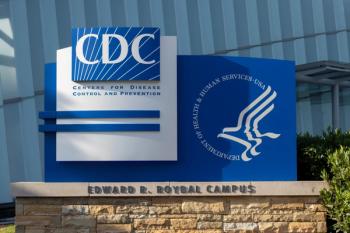
Blood Exposures Threaten Pharmacists Providing Patient Care
Pharmacists providing direct patient care should stay alert of serious blood exposures (BE).
Pharmacists providing direct patient care should stay alert of serious blood exposures (BE).
The Association of Occupational Health Professionals in Healthcare (AOHP) recently released the results of its 2012 Exposure Survey of Occupational Practice (EXPO-STOP), which recorded the proportions of percutaneous sharps injury (SI) and mucocutaneous BE among healthcare workers (HCW).
This survey revealed a national SI incidence rate of 28.2 per 100 occupied beds, or 2.2 per 100 full-time equivalent staff, showing that little reduction in SI rates has occurred in the last decade.
As health-system pharmacy practice continues to shift from mostly “basement” drug dispensing to more “bedside” direct patient care, health care organizations “must be sure the pharmacy team has been trained on proper use of that facility’s particular style” of safety engineered devices, EXPO-STOP co-author Linda Good, PhD, RN, COHN-S, director of employee occupational services at Scripps Health, told Pharmacy Times in an e-mail.
For instance, Dr. Good said, pharmacists administering immunizations should know that “needle stick occurs with some frequency when staff don’t correctly activate the safety mechanism” on vaccines.
“[Pharmacists] must be trained on the particular syringe system that they will be using, as it may be different from what they learned [because] there are many style of syringes, needles and safety devices,” she said. “Some slide, some retract.”
Beyond immunizations, health-system pharmacists “handle many sterile sharps in their drug-prep work, and even a sterile sharp can inflict a serious injury if it hits a ligament or nerve,” EXPO-STOP co-author Terry Grimmond told Pharmacy Times.
Dr. Grimmond asserted that pharmacists who handle sharps “must undergo the same risk assessment and reduction strategies that RNs and MDs do.”
John Moorman, PharmD, BCPS, a pharmacist at Akron General Medical Center in Ohio, told Pharmacy Times about another potential SI in pharmacists.
“Many pharmacists are involved with glucometer training, as well as with insulin and other injectable medications related to diabetes. When providing this education, there is always the risk of needle stick injury, although certain devices are safer than others,” he explained.
Anecdotally, Dr. Good hasn’t seen many pharmacists encounter BE, but she contended that “the challenge will be to keep [exposures] low as practice evolves.”
Newsletter
Stay informed on drug updates, treatment guidelines, and pharmacy practice trends—subscribe to Pharmacy Times for weekly clinical insights.




















































































































































































































